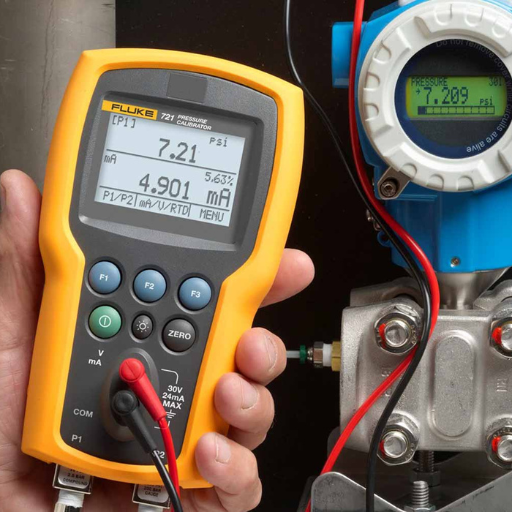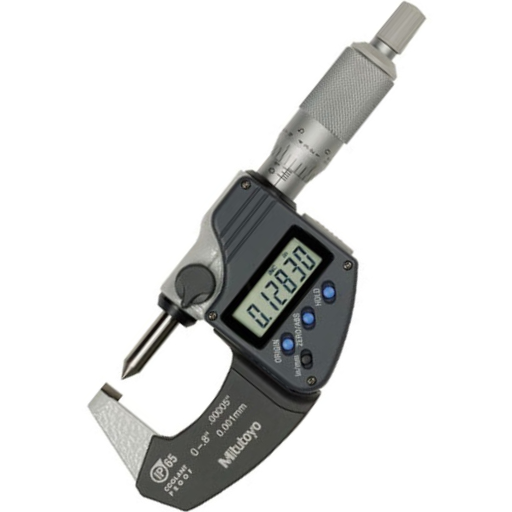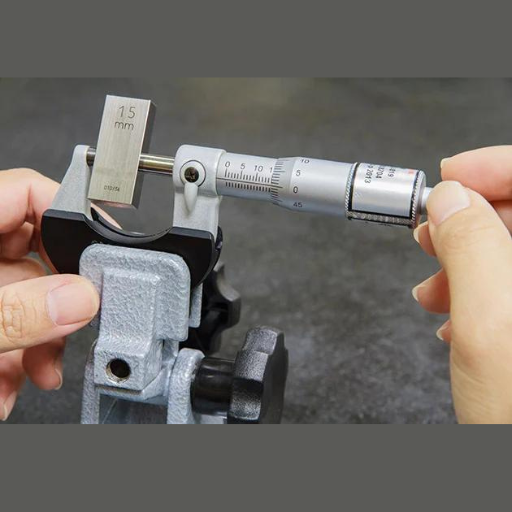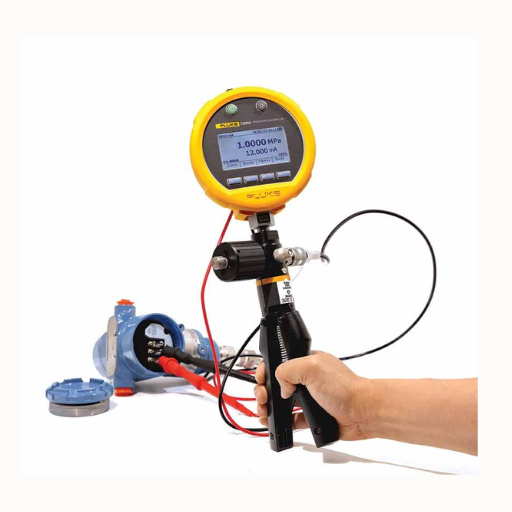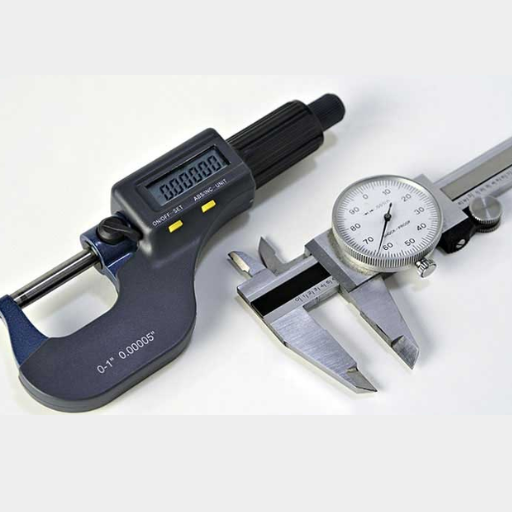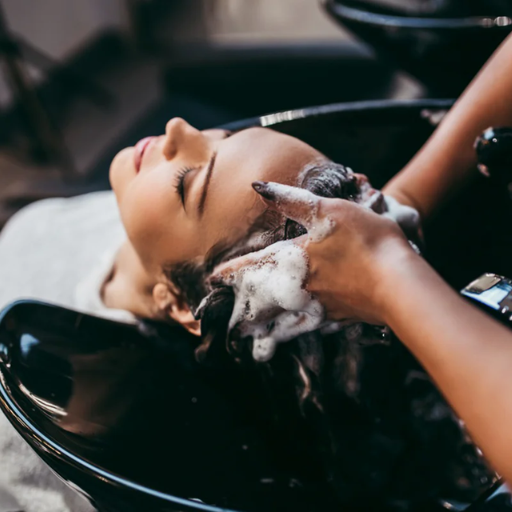In precision-dependent fields, the accuracy of measurements is paramount to achieving reliable and repeatable results. Calibration tools play a crucial role in ensuring that measuring instruments provide accurate data. This blog aims to explore the essential tools and procedures required for effective calibration. We will delve into the importance of calibration in various industries, the types of calibration tools available, and step-by-step procedures for calibrating different instruments. By understanding these foundational elements, readers will be equipped with the knowledge needed to maintain the integrity of their measurement processes and ensure optimal performance in their respective domains.
What is Calibration and Why is it Important?
Defining Calibration and Its Role in Measurement
Calibration is the process of tuning a measuring instrument by comparing it with an accepted standard. This ensures that the meter reads within acceptable accuracy limits. Calibration is important because it directly affects the dependability and consistency of measurements which are critical to precision-oriented fields such as engineering industries. Regular calibration identifies variances, helps maintain adherence to industry specifications and improves total quality of measurement processes. The integrity and efficiency of various industrial and scientific activities are supported through accurate instruments as well as trustworthy calibration.
The Impact of Calibration on Accuracy
Calibration significantly enhances the accuracy of measuring instruments by aligning readings with established standards. Accurate measurements are fundamental to quality control, research, and development across industries such as manufacturing, healthcare, and engineering. Key parameters involved include:
- Tolerance Levels: These define the acceptable range of measurement deviations hence by calibrating instruments manufactures can ensure that these deviations remain within pre-set limits.
- Resolution: This is the smallest diffraction-limited spot size or least detectable increment that can be measured by an instrument. Verification or potential alteration in resolution may result from calibration so as to meet specific requirements for a given sector.
- Traceability: Ensuring that measurements can be traced back to national or international standards guarantees consistency and comparability of data across different locations and times. Calibrating instruments ensures trace-ability while maintaining compliance with these norms.
- Repeatability: This refers to the ability of an instrument to produce consistent results when used under the same conditions. Repeatability occurs if calibration procedures identify any variations requiring adjustment.
Through addressing these parameters, calibration takes care of reliability in system measurement resulting into operating efficiency and meeting strict quality requirements respectively. Periodic calibration makes sure that instruments are functioning optimally thus aiding vital decision making in technical and scientific operations.
Industries Relying on Proper Calibration
Various industries depend heavily on accurate calibration of their instruments to ensure quality and precision in their operations. The top three sectors that particularly rely on proper calibration include:
- Manufacturing: Precise measurement is essential in manufacturing, where any variations from the actual dimensions or material properties may have a significant impact on the performance and quality of products. Regular calibration of measurement instruments ensures manufactured parts and products meet tight tolerances and specifications.
- Healthcare: Medical devices and diagnostic equipment require calibration in order to maintain reliability and accuracy. Correct measurements like blood pressure monitors, thermometers, or imaging machines are vital for patient safety and effective treatment; therefore proper calibration should be ensured.
- Aerospace & Defense: These industries employ strict calibration guidelines considering the nature of their work. Calibration makes all measurement tools used in aerospace & defense sector very precise ensuring aircrafts, weapons systems, and other defence technologies are safe and efficient enough.
These industries comply with regulation levels while at the same time increasing their operational efficiency coupled with quality assurance processes as a result of maintaining accurate calibration standards.
Types of Calibration Tools: A Comprehensive Overview
Calibration Devices and How They Work
Calibration equipment, which are crucial in various sectors, is used to check the accuracy and reliability of measuring instruments. Below are a few types of calibration devices and their functions:
- Calibrators: Calibrators are versatile instruments that can calibrate many different kinds of devices, including temperature sensors, pressure gauges, and electrical appliances. They work by generating certain values as inputs for comparing with the readings obtained from the device being calibrated.
- Multimeters: To manipulate electrical tools properly they should be calibrated. For instance multimeter is used to measure voltage, current and resistance accurately; hence they play an important role in diagnosing and troubleshooting electrical problems both in industry and at home.
- Micrometers & Calipers: These mechanical calibration tools have a major contribution towards dimensional measurements. Thus micrometer caliper takes measurements like length, thickness or diameter with high precision where it has to meet the exact specifications.
- Deadweight Testers: Deadweight testers are mainly used for pressure calibration purposes serving as reliable reference standards. They function by applying weights thus measured against readings from a Device Under Test (DUT).
- RTD & Thermocouple Calibrators: Specifically designed for temperature measurement instruments these calibrators include RTD (Resistance Temperature Detector) and thermocouple ones that ensure that sensors give correct temperatures reading which is very critical in most industrial laboratories.
- Oscilloscopes: The oscilloscope is another impressive tool for maintaining electronic devices such as transducers or signal conditioners through its ability to display electronic signals waveforms when calibrating them. It’s therefore vital during R&D activities as well as while servicing any electronics gadgets.
Using these calibration tools allows industries to maintain the accuracy, dependability of their measurement devices resulting in high performance quality assurance compliant output.
Choosing Proper Tools for Process Calibration
This implies evaluating several key factors so that your chosen instrument(s) provide specific solutions matching your application. First of all, accuracy and precision are important attributes to consider as different tools have varying tolerance levels. Consequently, consider the range of measurements that a particular gauge can make in this regard it needs to align with process parameters. Equally essential is usability aspects like user interface which directly influences how efficient the calibration tasks are done. Moreover, compatibility with other systems or software should be checked against environmental demands inherent in any application. Lastly, industry standards and certifications should be met so as to ensure reliability and regulatory compliance when choosing such devices. By doing so you will be able to find quality calibration instruments that will enhance efficacy and precision during various operations.
Multifunction Calibrator vs Single-purpose Calibrator
Whenever faced with a choice between a multifunction calibrator and single-purpose calibrator, it is important to think about versatility and application specific requirements. For instance multifunctional calibrators can perform functions like voltage, current, temperature or frequency measurements which make them suitable for situations where multiple types of calibrations are necessary. Substituting several separate purpose-oriented devices saves cost and improves efficiency.
On the flip side single purpose calibrators are designed for only one particular function type giving high accuracy and repeatability in this specific measurement category. Such tools can be readily operated by operators since they do not require much experience because they cater for only their designated task; thus making calibration work simpler hence faster without having any multiple functionalities in place.
Multifunction calibrator should be the choice if you want flexibility and versatility across multiple measurement types. Single purpose calibrator can be a preferred option for specific purpose, high precision work.
How to Calibrate Your Measurement Instruments
Tools’ Calibration: A Step-by-Step Tutorial
To Calibrate, Identify the Instrument
- Determine instrument type and model.
- Check manufacturer’s manual for calibration details.
Choose a Calibration Standard
- The calibration standard chosen should be an appropriate one that is equal to or more accurate than the calibrated instrument.
- Depending on type of instrument, some common standards can include reference sensors, voltage sources, and frequency generators among others.
Calibration Setup
- Do away with temperature variation as well as electrical noises in order to maintain stable conditions.
- It is also important to confirm that the calibration environment meets industry requirements and regulatory authorities’ terms.
Connect Instrument to Calibration Standard
- Instruments should be carefully connected by high-quality leads and connectors to compatible calibration standards.
- Ensure that all connections are correct. This will ensure no measurement errors occur.
Run the Calibration Process
- Calibration procedures as outlined by the manufacturer in manuals are followed.
- Compare instrument readings with those of the available standards. Note any discrepancies between them.
Some parameters for example that may be sought include
- Voltage Calibration: Apply a known voltage and measure; compare with the known value.
- Current Calibration: Pass a known current through it; compare with its standard output value.
- Temperature Calibration: Use a reference temperature sensor; compare with its standard readings.
- Frequency Calibration: Set up a waveform generator producing constant frequency signal; calculate against its standard reading.
Adjusting the Instrument (if necessary)
- If there are inconsistencies at this point, manufacturers’ guidelines about adjusting should be followed closely in order to make necessary corrections in line with your own findings after identifying these problems during recalibration process of it after coupled back together again during recalibrating only if confronted by inconsistencies found during previous testing phase.
Documenting Calibrations Results
- These records must capture all data from calibrations including initial readings made before adjustments were effected and final ones showing which technician did what job when certified certificates were issued out while indicating dates the calibrations were done.
- The calibration certificate must contain the date, type of calibration standard used and technician’s details.
Calibration Review and Approval
- Calibration results are to be sent for review by a competent authority.
- Also, when it meets the required accuracy specifications and standards only then can this instrument be used.
If you follow these steps, your measurement instruments will be calibrated accurately and efficiently thus maintaining reliability and precision in your tasks.
Common Calibration Procedures
Instruments Multi-meter Calibration:
- Voltage Calibration: Measure different voltage levels using multimeters connected to certified voltage sources. The meter should give readings within specified tolerances every time. Change if there is a need for adjustment.
- Current Calibration: Apply known currents to pass through the multimeter which has come into contact with reliable current source. This involves checking readings of various currents against their actual values according to that one source stated above otherwise ensure that there is no difference between its source value and what piped out from it during recalibration process following previous testing phase.
- Resistance Calibration: Connect a set of precise resistors in series with an ohm meter; compare resistance measurements against authentic standards.
Thermocouple Calibration:
- Temperature Calibration: Compare thermocouple readings in stable 0o C water bath or boiling water bath with known temperatures; generate target temperatures as needed with an appropriate calibration device for verification purposes.
Pressure Gauge Calibration:
- Pressure Calibration: Pressure gauge should be attached onto a pressure source having already been standardized before. Furthermore, apply pressures that are recognized then take readings from gauges making sure they conform to those present on recognized standard ones. Otherwise adjust it accordingly after seeing discrepancies though observed previously during recalibration process after being fixed together again while at this stage only if faced with errors made previously during earlier stages .
By doing so, these procedures will see every one of them achieving high accuracy/reliability levels necessary for accurate measurements/smooth operations.
Indispensable Calibration Accessories
In order to ensure that your instruments are accurate and reliable, these calibration accessories are essential:
- Calibration Weights: These weights come in various classes(E1, E2, F1) for different levels of accuracy in weighing scales.
- Calibration Bath: A precisely controlled heating or cooling bath that allows for constant temperatures during the calibration of thermometers, thermocouples and other temperature measuring devices.
- Pressure Calibrator: It is an instrument used to generate and measure pressures over a range while calibrating pressure gauges, transducers and such pressure sensitive instruments.
- Multifunction Calibrator: It has multi signals sourcing and measuring capability including voltage, current, resistance and frequency thereby making it ideal for multiple types of calibrations.
- Calibrated Reference resistors: These highly precise resistors verify the accuracy of electrical resistance measuring devices like multimeters.
- Deadweight Tester: This device often uses weighted masses to deliver specific pressures necessary for exact calibration processes while determining pressure.
- Humidity Standard: The humidity standard is referred to as a reference device or solution for calibrating hygrometers and other humidity gauging tools.
These key calibration accessories help preserve the precision and reliability of measurement instruments ensuring they work consistently across all tasks.
Top Calibration Equipment Brands and Tools
Fluke Calibration Tools Summary
Fluke is popular for manufacturing high-quality calibration tools suitable for diverse industries and applications. Their vast range of products includes electrical, temperature, pressure and flow calibration devices. Here are some details on some key Fluke tools:
- Versatile Fluke 5522A Multi-Product Calibrator: This multi-purpose calibrator enables the calibration of numerous electronic test equipment such as handheld or bench meters, oscilloscopes and thermometers. Its great functionality coupled with high accuracy makes it ideal for a wide range of calibration tasks.
- Powerful Fluke 754 Documenting Process Calibrator: This HART communicator and calibrator in one can source simulate, measure pressure, temperature and electrical signals allowing automated capture of as found/as left data during maintenance and calibration in process industry.
- Mobile Fluke Calibration 6109A/7109A Portable Calibration Baths: These portable baths are designed to enable field service technicians to perform on-site calibrations on their temperature sensors. They are highly stable with a good uniformity across all temperatures; this allows them to calibrate varied types of temperature measurement instruments under diverse conditions.
Precise, dependable measurements that deliver repeatable results are achieved through innovation and quality commitment by Fluke in its calibration tools, which makes them the best choices among professionals worldwide.
Essentials of Credible Calibration Equipment
Reliable calibration equipment has several important features that guarantee accuracy as well dependability even in different applications. Some critical attributes listed below were obtained from premier industry sources:
- Accuracy: Reliable calibration tools generate highly precise measurements necessary for maintaining integrity of calibrated equipment; hence ensuring operational standards and regulatory requirements are met always.
- Stability & Consistency: Superior quality caliberation devices maintain stable performance over time showing consistent results which is important for repeatable trustworthy outcomes. It minimizes variations or errors that may affect measurements substantially.
- Versatility: The best callibration tools encompass various parameters including electricity, temperature, pressure and flow. By this, one device can be used for multiple purposes making it more useful.
- Ease of Use: The calibration equipment is designed with user friendly interfaces and controls that can be used by professionals as well as non-professionals. It reduces time taken in training and operation costs while enhancing efficiency.
- Portability: Portable calibration devices allow for field calibration, which is important particularly in industries requiring instant validation of equipments. Portability combines ease with reliability thereby helping to maintain instruments performance in different environments.
- Data Management: Advanced callibration tools often comes with built-in data logging and documentation capability. This feature helps to track callibration histories and maintains industry standards compliance thus providing reliable quality assurance solution.
These features enable professionals to achieve precision, reliability, repeatability measurements so that the integrity and performance of the instrument are maintained.
The Future of Calibration Tools and Technologies
Calibration Instruments and Recent Trends
Emerging trends in calibration instruments are what I want to delve into.In the calibration processes, it has become very important for the automation of numerous activities. The reduction of human error, increased efficiency levels and consistent outcomes is a major drive towards automated systems. Secondly, there has been an advancement in wireless technology as well as remote calibration. This invention allows for seamless exchange of data and live monitoring, which is beneficial especially in complex or hard-to-reach areas. Lastly, we can observe that artificial intelligence (AI) and machine learning (ML) have played a significant role in changing how calibration data is analyzed. Through AI and ML deeper understanding and insights about calibration tendencies are achieved for predictive maintenance enhanced decision-making on equipment performance management can be done Consequently, it is clear that future of calibration instruments will be underpinned by technological advancements that emphasize precision, effectiveness and inter-connectivity.
Digital Calibration’s Role in Modern Industry
Modern industry has seen rapid changes over time with digital calibration being one key factor that ensures measurement accuracy and reliability.There exists a primary advantage over traditional methods due to the high level of accuracy and consistency shown by digital calibrations.Digital systems come with multiple features such as automatic data logging, instant verification among other digital tools which collectively ensure fast implementation of the entire process.Additionally,the use of digitalized processes helps establish better traceability through conformance with more stringent industrial norms.Thus industries should optimize their equipment functionality using these modern day technologies while at same time minimizing downtime due to breakdowns resulting into quality outputs required for maintaining competitive edge.
Calibration Techniques Advancements
It is evident how recent advances in calibrations approaches are increasingly depending on technology to increase accuracy as well as speediness.It can be seen from this point that one such development was initiated when automated calibration system was introduced which lowered human error giving faster results.T he use of wireless tools for calibrating devices is another improvement that makes it easier for calibration activities to be carried out in complicated or remote areas. Also, the integration of artificial intelligence (AI) and machine learning (ML) into the process of calibration can provide advanced data analysis, knowledge of anticipated maintenance requirements, and optimization of calibration cycles. These innovations cumulatively improve the accuracy, efficiency, and dependability of calibration processes which are necessary to adhere to the high standards set by industry today.
Reference sources
1. Online Article from Industry Publication
Title: Understanding Calibration: Why It’s Important and How to Do It Right
Source: Quality Magazine
Summary: This article from Quality Magazine delves into the importance of calibration in ensuring the accuracy of measurements in various industries. It discusses types of calibration tools, such as micrometers, calipers, and gauge blocks, and provides a step-by-step guide on how to properly calibrate these instruments. The article is written by an industry expert and includes insights into best practices and common pitfalls in the calibration process. This source is highly credible due to its publication in a reputable industry magazine and the author’s expertise.
2. Academic Journal Article
Title: Methods and Procedures for Calibrating Measurement Instruments
Summary: This peer-reviewed journal article offers a comprehensive overview of the methods and procedures used in the calibration of measurement instruments. It covers theoretical aspects of calibration, including uncertainty analysis and traceability, as well as practical considerations for implementing calibration protocols in laboratory and industrial settings. Written by researchers in the field, the article provides detailed technical information supported by empirical data, making it a highly reliable source for those seeking an in-depth understanding of calibration processes.
3. Manufacturer Website
Title: Calibration and Maintenance Guide for Precision Instruments
Source: Fluke Corporation
Summary: Fluke Corporation, a leading manufacturer of electronic test tools and software, offers an extensive guide on their website dedicated to the calibration and maintenance of precision instruments. The guide explains the importance of regular calibration, outlines the tools required, and provides detailed instructions on how to calibrate various devices using Fluke’s products. Additionally, it includes case studies and customer testimonials that highlight real-world applications and benefits of proper calibration. As a manufacturer, Fluke provides authoritative and practical information that is directly relevant to users of their instruments.
Frequently Asked Questions (FAQs)
Q: What are calibration tools used for in metrology?
A: Calibration tools are necessary for achieving accurate and reliable measurements in various industries such as chemical processing, oil and gas, pharmaceuticals etc. These tools help maintain precision of instrumentation and process devices which allows technicians to establish that equipment is operating within the specified range.
Q: How frequently should process instruments be calibrated?
A: Process instruments should be subjected to regular calibration to guarantee accuracy and dependability. Though the frequency depends on individual plant requirements and actual application, generally it is advised to follow manufacturer’s instruction and industry standards.
Q: Some common calibration tools used by technicians?
A: Fluke process calibrators, process calibrations system rugged handhelds, specialized electronic measuring equipment are some of the usual ways that calibration my take place. These tools also feature portability so they can be carried a long distance or from one place to another easily.
Q: Why do we need field calibration in process plants?
A: Field calibration is very important in process plants because it facilitates testing and calibration of wide range of process instruments at site. It minimizes downtime while maintaining high productivity levels so that all equipment give out correct data for safe running of processes.
Q: What role does a lab have played by a bench for calibration purposes?
A: A bench used in calibrating provides secure controlled surroundings that enable workers perform meticulous steps on different instrumentations as well as electronic devices. In this case detailed procedures involving accurate readings may be done with better results using this arrangement.
Q: How do you choose the right process calibration equipment?
A: Choosing appropriate process calibration equipment requires factoring in elements like type of calibrated device employed across processes, environmental conditions prevailing thereat plus required accuracy levels. Matching these tools with specific instruments therefore improving their use within fields will improve efficiency and effectiveness throughout the exercise.



